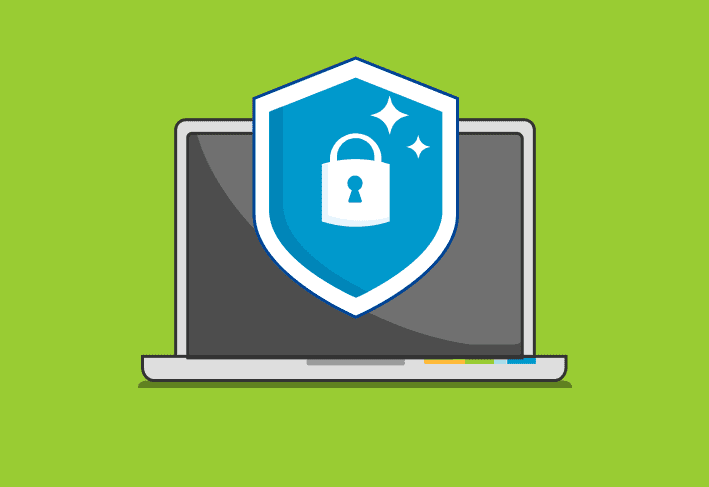What is shadow IT?
Shadow IT refers to technology solutions employees use without official IT approval. Shadow IT includes using software, hardware, cloud services, or other technology within an organization outside of deployment or oversight from the IT department.
Most of the time, shadow IT occurs in the name of productivity. Employees are trying to move faster, work smarter, or bypass outdated tools. Whether it’s something as small as forwarding work emails from a personal Gmail account or as big as signing up for an entire SaaS platform without anyone’s knowledge, the intent is usually speed, not sabotage.
However, even good intentions can lead to serious risks when IT isn’t in the loop, and every unsanctioned tool creates a potential entry point for data exposure and compliance gaps.
Why shadow IT in your environment matters:
Loss of data control: IT can’t protect what it doesn’t know exists.
Regulatory risks: Unvetted tools may violate HIPAA, GDPR, PCI-DSS, and more.
Business disruptions: Shadow IT increases the likelihood of outages and security incidents.
Reputational damage: Data mishandling erodes customer, public, and partner trust.
Shadow IT is like a spider web, nearly invisible until you're tangled. If left unchecked, it can spiral into security chaos.
What are examples of shadow IT?
Shadow IT can take many forms, and most of them look like everyday behavior. Some of the most common real-world examples include:
Unapproved file sharing: Using personal Dropbox, Google Drive, or USB drives instead of secure platforms.
Unauthorized SaaS tools: Teams signing up for apps without IT vetting.
Personal messaging apps: Using apps like WhatsApp, Telegram, or Signal without oversight.
Personal email for work: Forwarding sensitive company info through Gmail.
Unvetted AI tools or browser extensions: Using grammar checkers, copilots, or automation tools that collect data outside IT’s view.
DIY hardware: Finding rogue Raspberry Pi devices stashed in server closets.
Non-approved video platforms: Using Zoom instead of standardized tools like Teams or Webex.
BYOD without controls: Accessing the network from personal devices.
Personal Git repos: Developers pushing company code to private repositories—fast but dangerously exposed.
Basically: If IT didn’t approve it and doesn’t know about it, it’s shadow IT.
Why does shadow IT happen?
Here’s the thing: Admin or not, most of us have been guilty of shadow IT at some point in our careers.
You know that old adage, “If you want something done right, you’ve got to do it yourself”?
Yeah. That’s exactly why shadow IT exists.
In fast-paced, high-growth environments, “Move fast and break things” often feels like the rule, not the exception. Marketing doesn’t care about your SOC 2 status, they just want to try that new project management tool with the flashy AI features they heard about at last week’s conference. It’s not malicious. They’re just trying to get things done (and maybe ask for forgiveness instead of permission).
The problem? Your enterprise data is now being processed by a third-party vendor that no one vetted. This is a compliance nightmare and much more common than most companies realize.
So why does shadow IT keep happening?
IT approval is slow: Teams default to faster options.
Official tools don’t work well: Outdated software drives users to find alternatives.
Modern SaaS is accessible: Free trials and self-service sign-ups make it easy to bypass IT.
Users don’t know the rules: Employees often aren’t aware of compliance requirements.
No app governance exists: Without a clear process, people invent their own.
What motivates shadow IT:
Agility: Teams want to move fast.
Flexibility: Users prefer tools that match their workflows.
Cost savings: Skipping procurement feels efficient until it isn’t.
Understanding why shadow IT happens is key to addressing it. The solution isn’t to punish users; it’s to meet their needs before they look elsewhere.
What are the risks of shadow IT?
Shadow IT might look harmless, but it creates serious risks, especially to cybersecurity, compliance, and operational stability.
TL;DR: Unapproved tools create real consequences in your org’s workspace.
Security risks of shadow IT
Shadow IT tools sneak past your IT team’s usual review, testing, and patching processes, which is a big problem. Without visibility or vetting, these unsanctioned apps and devices often miss critical security updates, quietly expand your attack surface, and leave room for undetected backdoors.
In addition, they typically lack proper logging or monitoring, turning what should be minor blind spots into full-blown breach risks.
Compliance risks of shadow IT
Regulations like HIPAA, GDPR, PCI-DSS, and SOC 2 require strict data governance, but shadow IT routinely violates those requirements.
Unauthorized tools break the chain of custody by storing regulated data in noncompliant environments that lack audit trails, access controls, or encryption. The risk grows when sensitive data crosses borders through these systems, potentially violating data residency laws.
What starts as a shortcut for convenience can quickly turn into a serious compliance failure with real legal consequences.
And regulatory fines for compliance infractions can be steep:
HIPAA: Up to $1.5 million per year
GDPR: Up to €20 million or 4 percent of global annual revenue
PCI-DSS: $5,000 to $100,000 per month
Data fragmentation and loss of visibility
When data spreads across unapproved systems, reliability takes a hit. Deletions become unreliable, auditing and reporting get harder, and the risk of sensitive data leaks goes up. Without centralized control, visibility disappears.
Workflow and productivity disruptions
Shadow IT tools usually don’t play well with official architecture, leading to fragile workflows. Unsupported apps can break after infrastructure changes, outages strike without a clear owner for a resolution, and IT gets stuck handling support requests they can’t resolve. Remote and hybrid teams are especially prone to this.
Internal IT dysfunction
Even without a breach, shadow IT chips away at operations. It undermines the credibility of IT and InfoSec, complicates audits and compliance work, and drains time and resources. Ultimately, it’s so much more than inconvenient. It puts your data, money, and public reputation at risk.
How to manage shadow IT
You can’t eliminate shadow IT, but mitigating it starts with visibility, communication, and making it easier for users to stay compliant.
How to manage shadow IT? Audit. Audit. Audit. Then audit again. Audit application use every six months, every quarter, or even every two weeks if you want to be a superstar. Visibility is the first step to control.
Step 1: Discover unauthorized tools
Start with tools that give you full visibility:
Use network monitoring to detect rogue traffic and devices.
Deploy a CASB (cloud access security broker) to log unsanctioned SaaS use.
Implement a mobile device management solution (like PDQ Connect!) to help monitor BYOD access.
Set up alerts for unknown domains, apps, or access behavior.
Reduce your attack surface in a few clicks
Looking for more ways to improve your security posture? Try PDQ Connect, and remediate vulnerabilities in seconds.
Step 2: Streamline software approval
Prevent shadow IT by giving teams a legitimate path. Set up a lightweight new software request process, and approve or deny quickly, since speed is key.
Here’s a sample basic application acquisition request checklist:
The user submits a ticket for a “New Software Review” first.
Ask the user to provide the following:
The name of the internal “owner” or DRI (direct responsible individual) of the software
Whether licensing is required, if so, who will be responsible for managing it
A link or location for instructions on automated deployment
A point of contact who will supply future installers and updates for the software
Step 3: Train employees
Most users don’t know what shadow IT is or why it’s risky. Educate your users on the security, legal, and financial risks of unapproved tools. Help them understand which tools are approved and safe to use, and where and how to request the tools that they need.
Step 4: Build flexible IT policies
Modern IT policies should be secure but adaptable. Focus on these steps:
Implement an approved app marketplace or maintain an app library.
Enforce zero trust security principles like single sign-on (SSO) and endpoint protection.
Allow secure, vetted alternatives to popular tools.
Regularly review high-usage apps, even if they started as shadow tools.
Apply least privilege access controls so users only access what they need.
Step 5: Track and reduce shadow IT costs
Shadow IT isn’t just risky, it’s expensive. It leads to duplicate software licenses, poor resource allocation across different departments, and subscription bloat from duplicative tools across orgs.
Final thoughts on shadow IT
Shadow IT is inevitable, but invisible doesn’t have to mean unmanaged. The goal isn’t to ban every unauthorized app; it’s to make sanctioned, secure tools easier to use and access.
The best defense? Have the C-suite give you unlimited funds for new apps. ;)
But in reality, prioritize software and hardware requests, make the approval process easy, and do your best to meet user needs — or at least find a compromise — before they go looking for themselves.
You can't manage what you can't see, so get the visibility and control you need! Try PDQ for free and shut down shadow IT before it bites.



